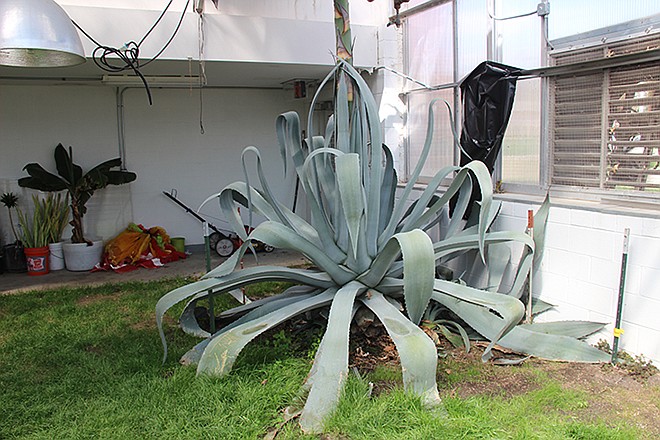KIRKSVILLE, Mo. (AP) - A giant plant that has been at Truman State University for roughly five decades is getting ready to put on the show of its life before succumbing to its inevitable fate.
Already, the Agave americana plant's performance in the university's greenhouse in Kirksville has been through the roof - literally.
The giant plant is entering its flowering stage, which only happens before death.
Student workers first noticed a stalk beginning to shoot up a few weeks ago, greenhouse manager Jenna Canfield said. It has grown so fast Truman State maintenance personnel had to remove panels from the greenhouse ceiling before it had a chance to smash through.
"We were getting worried it would go through the roof before we were ready to take the panel off," Canfield said.
The stalk could grow up to 25 feet before branching out and flowering in the next few weeks, said Lisa Hooper, an associate biology professor.
The Agave americana typically grows in the deserts of Mexico and is best known for its role in production of tequila. Sugars build up in the leaves and are fermented for alcoholic beverages.
While the whole flowering process could be spectacular, it also marks the plant's pending demise, Hooper said.
"This particular plant, this species, will only flower once in their lifetime and then they die," she said.
Part of the plant will live on, thanks to new plants sprouting from its base. Other plants could pop up, too, if pollinators like bats and moths come around, she said.
"It's been here for 50 years, for all we know," Hooper said. "We don't know who brought it here originally. All we know anecdotally is we have faculty members who have been here for 35 or 40 years and they remember it as a fairly big plant."

